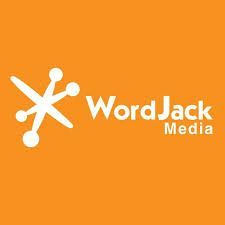How to roll out social shopping for your clients
Sharlotte Briscoe • October 11, 2023
WRITTEN BY
There’s an abundant list of reasons why social shopping is important for a small business. With the juiciest being more sales! But what other things can social shopping do for your client’s business?
- An increase in exposure and engagement
- Gives you data insights
- Gives them an advantage over their competitors
- Increases brand awareness
Not only does social shopping give them a leg up in the digital world, but it’s also beneficial for their customers. They can discover their new products and offers, then head straight to checkout seamlessly in their favourite social app! There’s more but we’ll get to the meat and bones later in this article.
Understanding Social Shopping
What’s social shopping?
Social shopping is a digital retail channel where customers are able to shop for products directly from a social feed: Whether it’s an Insta grid, Facebook feed or even a TikTok video.
Very similar to online shopping but, it’s done directly through social platforms, so the consumer doesn’t even need to leave the app.
Instant gratification at its finest
finest
How social media and e-commerce merge
The merging of social platforms and e-commerce tools is a game changer and represents a massive shift across the digital space.
Social shopping allows a business to reach its target audiences directly. Facilitating seamless discovery and purchase of new products – All without leaving the app!
Our socials have gone from plain old communication tools and have morphed into multi-faceted marketplaces that you can access from the comfort of your living room recliner.
Which platforms have seen success?
- Instagram has released features such as Shopping Tags and shippable posts, which allow business owners to tag their products in their posts – Which users can then go through to make a purchase on the platform.
- Pinterest users can find and save products they like from a business’ shippable pins that redirect the customer to their website.
- Facebook has a marketplace future that allows users to buy & sell locally. Also, Facebook Shop allows businesses to create customisable shopfronts to display their products – Which users can browse and checkout without leaving the app.
- TikTok has created a ‘Shop Now’ button for businesses which enables viewers to buy products directly from short video ads.
There are more you can explore too such as Amazon Live , Etsy and Snapchat.
Setting Goals and Objectives
In order for you to help your client’s businesses grow, you need to know how much they want to grow and the timescale in which they want to see this growth.
To set effective goals and objectives, first, you need to identify the client’s objectives. What is it that they want to get out of the social shopping? Do they want to focus on click-throughs? Or actual sales?
Defining what success looks like for them will make it easier to define measurable goals to evaluate the success of their social shopping.
These could look like:
- Increasing sales
- Improving conversion rates
- Enhancing brand awareness
- Build customer loyalty
- Drive website traffic
- Achieve competitive advantage
As much as it’s tempting to pluck these goals out of a hat, they also need to complement the current overall business goals, so be sure to have these in mind when setting out your social shopping goals.
How do I select the right Social Shopping Platform?
Research, research, research!
Knowledge when it comes to social shopping platforms is key. So in order to have the best chance of selecting the platform that is right for your client, the best thing to do is to read up on each platform and compare them all. Evaluating all of their features, user experience and pricing to decide which one(s) is going to align best with the outcome your client wants to achieve.
Knowing their customer base and target audience is key here. In order to know which platform they would be the most compatible with.
The integration of the platforms and the capabilities of your client’s existing system must be something you take into consideration as well. To ensure a seamless and functional relationship between the two.
Crafting a Social Shopping Strategy
First up, you’ll need to identify your client’s target audience, which is the group of people their product caters to. Creating a customer persona is a great way to whittle down who your ideal customer base is and what this looks like. E.g their age group, gender, interests etc.
Determining which products are added to your social shopping channels is also a must. As social shopping is not a one-size-fits-all. For example, if you’re an Antique dealer. They’re probably not the type of items you’d want to list on your social shopping channel. The logistics and insurance for such items are so complex that it would definitely be more trouble than it’s worth!
Also, things like medical supplies, perishable goods like fresh foods, custom or made-to-order products and large, expensive items wouldn’t be ideal.
To get the best out of social shopping you’ll also want to craft a rock-solid content strategy to promote your products this includes;
- Understanding your audience
- Highlight your product benefits
- Create visually appealing & educational content
- Tell a story
- Engage with live streams
- Leverage UGC ( user-generated content ) and Influencer collaborations
- Promotions & special offers
- Keyword optimisation
- Consistent branding
Implementing Social Shopping Tools
The next step is to merge your site and social shopping together. By signing up for social shopping, you’ll have the buttons and widgets to add to your site.
A crucial step for social shopping success is optimising your product listings for sharing on Social media. Here’s what you need to focus on:
- High-quality images and videos – This plays big time into the trust factor. Posting videos and pictures that don’t look like they’ve had any thought or care put into them screams spam. Ensure that you use a good camera (even if it’s a phone camera) and plan your videos to ensure they’re of a top standard.
- Engaging visuals – Blank backgrounds behind your products are so last year! Why not make your images stand out by using lifestyle-type images and bringing a little spice to your listings? Also, using product placement currently can help the consumer visualise how this product would fit into their own life.
- Tell a story
– Storytelling within copywriting and product listing is essential! You want the customer to read about the product and really understand why they need it. They’re not going to get past the first line if your copy is boring

- Highlight key features – Use small lists or sections to shout about what the product’s benefits are. Remember the customer doesn’t care what it is, they care about how it’s going to help them!
- Use descriptive titles – Don’t leave people guessing. Make sure that your product titles are thorough and descriptive.
- Clear CTA – Encourage your followers to share the posts by including a call-to-action! Ask them to share to their stories or with a friend!
Utilising shoppable posts and stories (posts that have links directly to your social shop) on your socials will encourage reach to the target audience. They’ll appear on their feed as normal posts and stories do, without them having to go directly to your social shop to find your products.
Engaging with Customers
A crucial element of success on socials is audience engagement. And the success of your social shopping is no different.
User Generated Content
Engaging with your followers and audience alike will encourage user-generated content. This is the new ‘influencer marketing’ and is basically social media users posting videos using your products.
Gone are the days when people only trusted the words of influencers. People will often look for videos and reviews of ‘normal’ people or smaller accounts to get an honest opinion and review of your products.
Reviews
Another invaluable outcome of engaging with your customers and great service is reviews. Whether those reviews come in the forms of social posts, comments, DM’s or reviews on platforms like Trustpilot, Google or the like – They’re gold dust!
Responding to customer enquiries and feedback promptly
We all know that companies being lax in responding to your questions and enquiries are off-putting. So it’s super important that you’re on the ball when responding to customers and potential customers alike.
Gaining a reputation as a company that is responsive and proactive with its customers will earn you a few gold stars, to say the least!
Leveraging influencers and brand ambassadors for engagement
With some influencers having 10’s of millions of followers. Leveraging their audiences to gain exposure and engagement on your social channels is a no-brainer. Oftentimes it’s the first choice for companies wanting to build their audience on social channels.
Brand ambassadors are also great to leverage for increasing engagement and are similar to influencers. They’re social media users who usually have a moderate to high following and will sign up for an ambassador program. They usually get discounts on your products or are paid to promote them.
Analysing and Optimising Performance
In order to make sure that the business is getting value from their social shopping strategy it’s crucial to monitor the metrics and analytics regularly. This is to make sure that:
- The strategy is working
- The budget is working
- You’ve listed the right kind of products
- You’re targeting the right audience
- You’re utilising social shopping on the right platform!
Looking at customer behaviour will also give you key insights into whether your strategy is working or not. For example, if there’s a high volume of views, but no sales, you need to use this data to adjust your strategy in order to see improvements.
Promoting Your Social Shopping Initiatives
Other ways in which you can attract buyers are social media ad campaigns, email marketing and affiliates. You can create targeted and specific ads depending on your target audience and pay for the platform to promote the post and get it in front of your ideal customer.
If you’ve got a meaty email list, email marketing is a fab tool tool to get your products in front of customers too. And if your email campaigns are frequent this will keep your business at the forefront of people’s minds because they’re seeing your company name regularly.
Creating an affiliate program for the business can be a lucrative route too. This method involves creating affiliate links. Used by people, businesses or influencers that have a decent following or high volume of traffic to their site. They earn a commission off every sale that’s made through their link.
Importance of Case Studies and Success Stories
Being knowledgeable about social shopping is only half the hurdle. Showcasing clients who’ve implemented social shopping successfully and obtaining case studies are key in the persuasion of your clients signing on the dotted line.
People are obsessed with seeing how things have worked for other people before they commit to something. And rightly so! You want to know that a business can walk the walk. So showcasing previous real-world examples will be just the ticket.
Highlighting the impact that their social shopping has had on their sales, customer engagement and brand awareness. In addition to providing some key takeaways and lessons that your agency learned along the way is the perfect social proof.
So should you implement social shopping in your agency?
Social shopping is a fantastic way to boost all the juicy bits of the business, like customer engagement, sales and brand awareness. Even valuable data such as customer insights and behaviour and the demographics that engage with your content and products the most.
Encouraging clients to embrace social shopping
Start with presenting your clients with data on the growing popularity of social shopping. Share statistics and success stories from your own clients if possible on how effective it has been in elevating their business goals!
Explain the power of social shopping aspects such as user-generated content, its impact on brand loyalty and return on investment too.
Social shopping can bring a long list of positives for your client’s business so you’d do them a disservice by not cluing them up on it!
Happy auditing!
 The Insites Team
The Insites Team


























